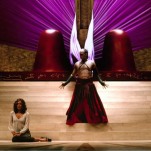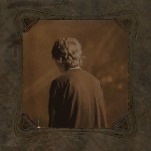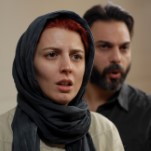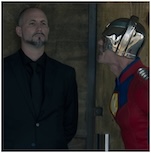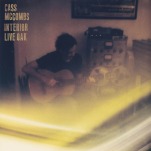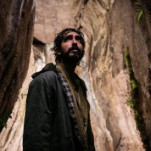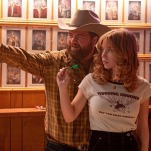Transcendent Aussie Drama The New Boy Is Sparsely Beautiful
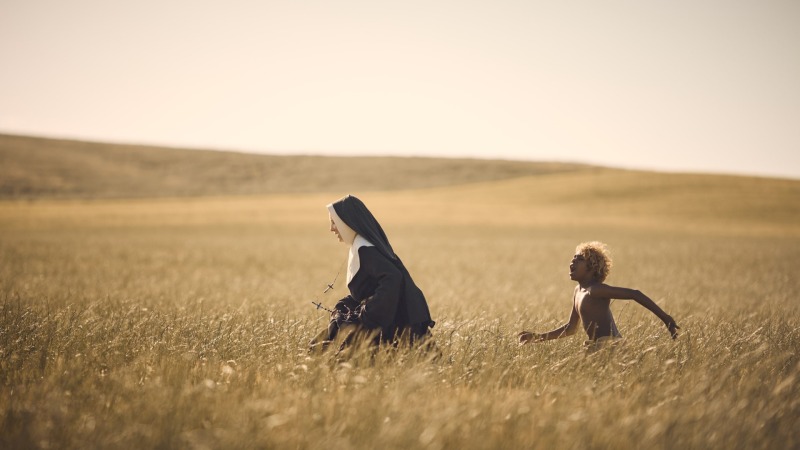
Is it possible to earnestly share one’s faith to someone who has no choice but to listen? If I’m determined to share my religious views with you, it will of course be within your scope of options to simply disregard or disengage. But what about when the target of that proselytization is a small child; one plucked from their own self-contained existence and physically brought under duress to a remote Australian Catholic monastery for orphaned boys? Is it even possible to, in these circumstances, “share” religious learning with this kid, without it being tantamount to an ultimately violent assault on the culture he inherited at birth, the culture now being taken from him? And if he begins to accept some of those inescapable teachings in the interest of embracing the only community available to him … has he in some way betrayed that heritage? These are some of the heady musings at the heart of director Warwick Thornton’s The New Boy, an Aussie religious drama that premiered at Cannes in 2023, finally headed to the U.S. this week in limited theatrical release. Gorgeously shot and intellectually/emotionally provoking, the film tantalizes with transcendent revelations but is simultaneously unbalanced in how it approaches its characters and minimalist storytelling.
Likewise written by Thornton, The New Boy’s sparse outline feels like it could have been a premise poached from the little black books of Stephen King or Guillermo del Toro. A nameless, mysterious Aboriginal boy (Aswan Reid, captivating throughout)–sporting an unusual shock of blonde hair that suggests almost mystical origins–is discovered by British soldiery wandering the desert and violently captured (yes, a boomerang is employed). Treated like a piece of luggage, he’s dumped at the rural monastery run by Sister Eileen (Cate Blanchett), where orphaned boys (and some other Aboriginal children) are given Christian upbringings, taught to speak and write English, and made fit to enter white society. But ah, “the new boy” is a cinematic Special Child, speaking not a word of any intelligible language, but seemingly gifted with a suite of mysterious, supernatural abilities that are as natural to him as breathing. You expect this might result in something like a battle of wills, as Sister Eileen and The New Boy attempt to assert their beliefs and integrate the fantastical abilities of the child into a worldview reflecting their faith. Instead, however, it’s compassion that motivates their interactions, but this has a beguiling, almost seductive effect of its own. Will the good-natured child’s abilities threaten Sister Eileen’s convictions? Or will her kindness and hospitality threaten the boy’s spiritualism, stripping him of his unique gifts the same way the Catholic system tries to remove the “savage” nature of its dark-skinned Aboriginal charges?
I was unsurprised to read that Thornton is also a cinematographer, and his multifaceted fingerprint over most every aspect of The New Boy yields a film that is sumptuously personalized and imbued with potent visual and spiritual metaphor. The film is absolutely beautiful to behold; Thornton’s sweeping Outback vistas given all the more power by a soaring, emotive score from Nick Cave and Warren Ellis. From the parched desert grasses with their scuttling lizards and darting snakes, to the stands of massive, prehistoric trees and rolling fields of wheat, the film frequently evokes the painterly pastoral compositions of Terrence Malick. The visuals make a natural bedfellow with a film that is perhaps unsurprisingly light on traditional plot; The New Boy is much more interested in drinking up both the heady beauty and harsh challenges of surviving and coming of age in this place rather than anything akin to a three-act structure.
Our focal point is almost always The New Boy, creating quite a showcase for Aswan Reid, whose face and eyes are tasked with conveying all the fear, wonder, instinct and eventual longing of a boy who seemingly walked out of the desert a fully formed enigma. Unexpectedly, The New Boy already has clear understanding of his supernatural abilities when we meet him–you expect this sort of screenplay to present such “powers” as things that he can’t control, or emerge under duress, which would task his arc with harnessing them as he exerts control and independence. Instead, his abilities are more like a security blanket: He can create sparking flames with fantastical properties (they can heal, among other things) from his hands, but this force is presented less like an extension of himself and more like a powerful force of the natural world that, whatever it is, is there for him when no one else is. His abilities keep him company when he’s alone, and he seems like a boy who has perhaps forever been alone. And that’s why he ultimately finds the community of the monastery–even among people he can’t speak to, who occasionally look at him with distrust or ridicule–so seductively appealing.
This effort to centralize the boy’s experience and frame the film’s events from his perspective is admirable, but it comes at the cost of minimizing the outline and contribution of Blanchett, ostensibly the movie’s marquee star. Sister Eileen is held at a curious distance from The New Boy for too much of a runtime that doesn’t really have a ton of time to spare, at a relatively lean 96 minutes. We’re 70 minutes in before she finally witnesses the boy using his abilities, which back-loads too much of her subsequent arc into a short time frame and ultimately suggests a crisis of faith (the thought that the boy may have a connection with God she can never understand) more than it is really able to get into the nitty gritty of it. It’s odd that The New Boy isn’t a bit longer; it consistently hints at the potential for a deeper conflict of beliefs that never quite materializes.
-

-

-

-

-

-

-

-

-

-

-

-

-

-

-

-

-

-

-

-

-

-

-

-

-

-

-

-

-

-

-

-

-

-

-

-

-

-

-

-





